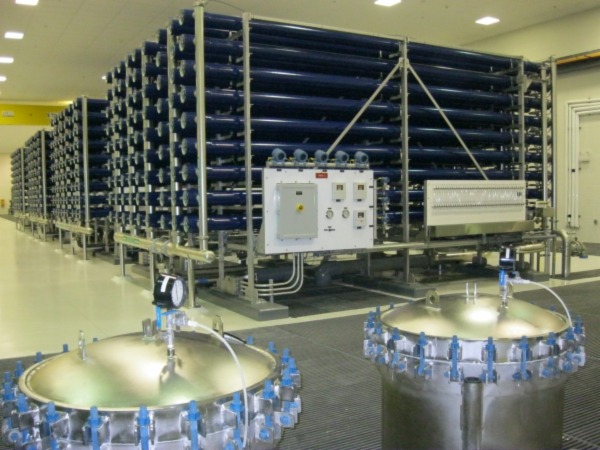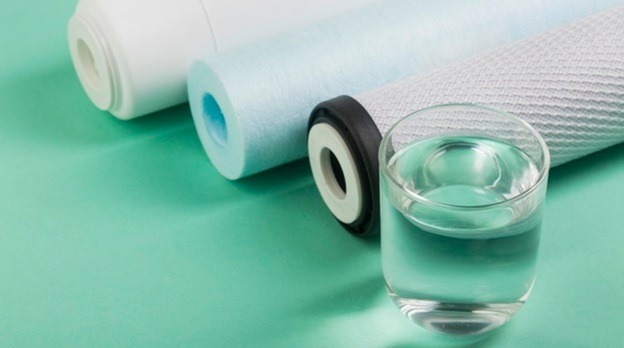Reverse Osmosis can remove about 80 harmful contaminants from your water supply. RO filtration systems in your home will make drinking water much safer to consume.
We all know that water is the essence of life, and our bodies are made up of roughly about 70% of it. It is a vital nutrient that allows the body cells to grow, reproduce and survive. However, unregulated water poses serious health risks as it may be contaminated with harmful toxins. Enter water filtration systems!
Water filtration is a process that reduces and removes most of the harmful bacteria, parasites, viruses, and other undesired chemical contaminants from the water to make it safe to drink. But the question is: Is that enough?
With the advent of advanced water purification technology, we can now have access to safe, clean, and pure water in the comfort of our homes. One such technology is the Reverse Osmosis (RO) filtration system that helps separate salt particles from the water and most of the contaminants. Before we look at the advantages of using this system, it’s imperative to understand the RO process and how it works.
What is Reverse Osmosis?
Osmosis is the transfer of molecules in the water from a low concentrated solution to a high-concentrate solution through a partially permeable membrane. Reverse Osmosis, on the other hand, occurs in the opposite direction of the natural osmosis. This process removes most of the contaminants by pushing the water under pressure through that semi-permeable membrane, hence giving us pure, drinking water that’s safe and healthy.
How Does Reverse Osmosis Filtration Work?
Reverse Osmosis Filtration technology eliminates the contaminants in the form of molecular compounds by squeezing out the good portion of water and blocking the unwanted harmful residues from passing through. Consider a mosquito net or a sieve. Compounds larger than the sieve or net will be left behind. Compounds such as iron, manganese, calcium, lead are among others that can pose a serious threat when consumed by humans and animals alike.
Reverse Osmosis technology is the most effective water purification method that uses high water pressure to make it clean from minerals and impurities. It does not require any external power supply or thermal energy. Instead, it is entirely dependent on high-pressure water pumps. This immense pressure pushes water through a partially permeable membrane, blocking large impurities and leaving you with a much healthier and safer drinking water supply.
What Are The Benefits of Using Reverse Osmosis?
Reverse osmosis water purification has several benefits, from blocking impurities to saving you a lot of dough. Let’s take a look at the advantages of using RO technology filters at our home:
1. Removes Contaminants
The obvious but still the most important aspect of using an RO filtration system is to rid water of unwanted impurities and contaminants. According to the Environmental Protection Agency (EPA), Reverse Osmosis effectively eliminates a majority of disease-causing organisms and most chemical contaminants. These include fluoride, arsenic, mercury, chlorine, lead, and 82 other contaminants that can pose health risks and are unsuitable for consumption.
2. Change in Taste and Appearance
You may wonder how filtering water can change its taste and appearance. As reverse osmosis can remove an approximate ninety-five percent Total Dissolved Solids (TDS), the taste of water dramatically changes, and so does its odor and appearance.. Chemicals such as chlorine and fluoride give the unfiltered water an unpleasant taste. Therefore, removing these impurities using RO technology will provide you with tastier drinking water.
Food or drink items made with this RO filtered water such as tea, coffee, and soup have a substantial impact on the taste, quality, and flavor of that item. Restaurant owners and chefs around the world prefer cooking using RO filtered water to improve the taste of their food.
The water’s physical appearance also looks more clear, which encourages people to drink more water. This also eliminates the need to buy plastic bottled water and protects the environment by reducing plastic waste.
3. Easy Maintenance
When you install a reverse osmosis filtration system, regardless of the location, for instance, under the sink, wall-mounted, on the countertop, or refrigerators, it requires low maintenance. Apart from changing or replacing filters and membranes when necessary (usually every six months is recommended for filters and two years for membranes), there’s nothing else you need to worry about. However, note that the length of time to replace filters and membranes may vary according to your area’s water quality and the amount of usage of your RO system.
4. Saves Money, Energy, and Space
If you are a regular buyer of bottled water, installing a reverse osmosis filtration system at your home will save you money and time. Combined with the convenience of getting pure drinking water every time, you can also reduce plastic waste, as mentioned earlier, making it better for the planet and environment.
Reverse osmosis purification systems require low energy to operate compared to other similar systems. This contributes to helping the environment and is also economical as low energy means low utility and electricity bills.
Depending on the type of model, reverse osmosis systems are very compact, and regardless of where you plan to place them, it requires little space. So now you have more room for that beautiful flower plant!
5. No Use of Chemicals
One of the best aspects of the reverse osmosis system is that it does not require any chemicals to purify water. Chemicals such as chlorine are removed in the carbon filtration stage, so therefore no new chemicals are introduced into the water supply after reverse osmosis takes place.
6. A Healthier Option
Installing a reverse osmosis system in your home will make your family members drink more water and reduce the consumption of sugary sodas.. With impurities removed, the reverse osmosis filtration system has proven efficient and cost-effective. It provides a number of health benefits such as lowering the risk for diseases, boosting skin health, speeding up the digestive system, and many others.
Should I invest in a Reverse Osmosis system?
Absolutely!
It’s not every day you get quality drinking water from the comfort of your home or office. A reverse osmosis system can save you money by reducing the purchase of bottled water and low energy bills and saving you space. This environmentally friendly system is easy to maintain and will provide you with purified water.
Are there any disadvantages of using a Reverse Osmosis system?
Just as there are benefits of using reverse osmosis, there are also downsides to it.
System Clog
If not maintained properly, reverse osmosis can sometimes lead to clogging of the whole system. Filters usually come with a sediment pre-filter that protects the system from soiling and being contaminated. When installing a reverse osmosis system at your home, make sure to go through maintenance manuals and service guidelines and understand when to change or replace filters when necessary.
Installation and Filter replacement cost
Installation costs of filters are high, and so are replacing filters. However, once the installation is done, all that’s left is the filter replacement which takes place every six months or so.
Low Pressure
When it comes to household application, the whole process takes time as the pressure used is very low. After installation, you need to wait and clear out the initial amount of water which takes about a few hours before you can consume the pure water.
How Much Water Do Reverse Osmosis Systems Use?
Depending on the quality of water in your area, the amount of water that is generally required is about 4 gallons to produce 1 gallon of pure and clean filtered water. This, of course, depends on a lot of factors such as water temperature, number of contaminants present, amount of dissolved solids in the water, and so on.
How Long Will the Reverse Osmosis System Last?
If maintained properly, the entire system will usually last between ten to fifteen years. All that is required is to change the reverse osmosis membrane and both pre and post-filters periodically in order to avoid damage to the system
In a Nutshell
Reverse Osmosis Systems are commonly installed and widely used for residential and commercial water filtration systems. It not only dissolves chemical particles but also removes biological entities and pathogens such as fungi, viruses, and parasites from the contaminated water. This system also helps in desalinating seawater in places where there are shortages of clean drinking water.
From cooking tasty dishes to mixing various beverages, reverse osmosis filtered water boosts the tastes and flavor of the food item. The clean and clear filtered water encourages people to drink more, which in turn helps speed up their metabolism and also lowers the risk for potential diseases. Apart from health benefits, the entire system or process is fully automated, so there is no hassle of remembering when to change filters as the system itself will notify you when it’s time. Enjoy safe drinking water at the comfort of your home or office and reap the benefits of clean and pure filtered water.


